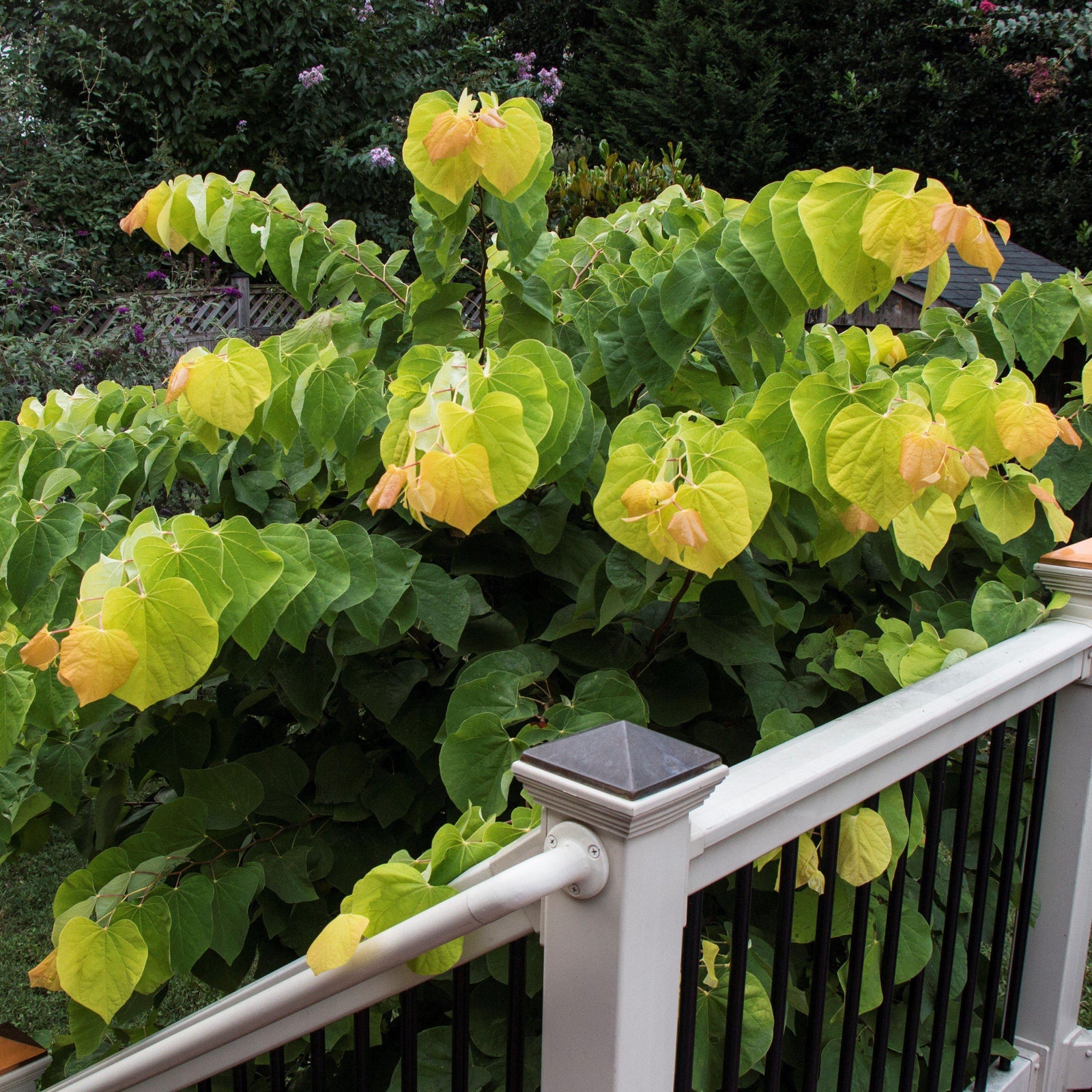Rising Sun Redbud is an extremely colorful dwarf native deciduous tree with multiple trunks and a rounded crown. Broad papery heart shaped leaves emerge dark apricot and gradually matures to dark green from bright gold and lime green in the summer heat, before turning yellow again for fall. A heavy profusion of deep pink flowers that bloom on bare branches in early spring before the foliage comes in attracting butterflies. Following the flowers are bean-like seed pods that mature in summer and can persist until winter. Prefers partial sun and rich well-drained soils with consistent moisture. Tolerates deer and Black Walnuts.
Cercis canadensis is an important host for the Henry's Elfin Butterfly and supports a specialized bee- the Southeast Blueberry Bee. Its nectar is an early food source for several butterflies, bees, and hummingbirds. The seedpods are enjoyed by birds and wildlife.
|
Type: |
|
|
Origins: |
Eastern N. America; GA Native |
|
Height: |
8’ - 10’ |
|
Spread: |
6’ - 10’ |
|
Spacing: |
8’ |
|
USDA Hardiness Zone: |
5 - 9 |
|
Culture: |
|
|
Bloom Color: |
Pink |
|
Season of Interest: |
MAINTENANCE NEEDS: Low maintenance. Canker can be a significant disease problem. Various diseases and pests and be prevented with regular watering and pruning of dead branches. Does not transplant well, plant when young and leave undisturbed.
LANDSCAPE USES: Specimen or mass plantings, Borders, Naturalized Areas, Woodland Garden, Wildlife Gardens, Screening, and Container.
COMPANION PLANTS: Mahonia, Hydrangea, Witch Hazel
IMAGES: Photoset by woodleywonderworks, Rising Sun Redbud, (2) rising sun redbud has fallen, (3) Photo by bobistraveling, Eastern Redbud Botantical Gardens Washington DC 7052
*As plants have ranges in appearance they may not appear as the images shown.

























































